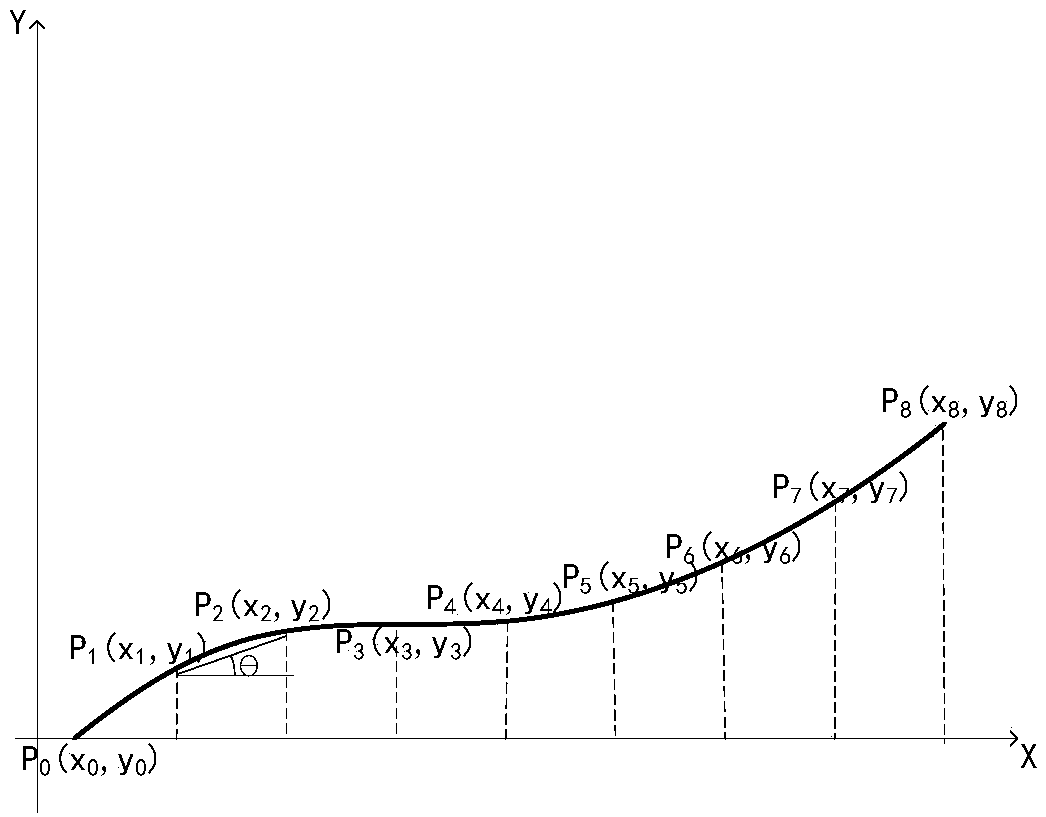Human-computer identification method and device based on sliding trajectory, and electronic equipment
A technology of sliding trajectory and man-machine recognition, which is applied in the computer field, can solve the problems of low accuracy rate and achieve the effect of improving accuracy rate, good recognition effect and improving robustness
- Summary
- Abstract
- Description
- Claims
- Application Information
AI Technical Summary
Problems solved by technology
Method used
Image
Examples
Embodiment 1
[0026] A human-machine recognition method based on sliding trajectory disclosed in the present application, such as figure 1 As shown, the method includes: step 100 to step 120.
[0027] Step 100, determine the preset dimension feature code of the historical sliding track that has passed the verification, and the feature code of the historical sliding track is based on the reference distribution feature of at least one time window.
[0028] During specific implementation, the sliding track data of the verified user in the past period of time is collected, and feature encoding is performed on each sliding track based on the preset dimension to obtain the feature encoding of the preset dimension. During specific implementation, the preset dimension feature encoding includes, but is not limited to: any or all of angle encoding and speed encoding.
[0029] Then, based on at least one time window, the reference distribution characteristics of each preset dimensional feature code a...
Embodiment 2
[0040] Such as figure 2 As shown, based on the first embodiment, the human-machine recognition method based on the sliding trajectory disclosed in another specific embodiment of the present application includes: step 200 to step 220 .
[0041] Step 200, determine the angle code of the historical sliding track that has passed the verification, and the angle code of the real-time sliding track is based on the reference distribution characteristics of at least one time window.
[0042] During specific implementation, determining the preset dimension feature encoding of the historical sliding track passed through verification, and the feature encoding of the historical sliding track based on the reference distribution feature of at least one time window, includes: for different dimensions, perform the following operations respectively: according to the user The historical sliding track data, determine the feature encoding of the preset dimension of each historical sliding track a...
Embodiment 3
[0111] Such as Figure 4 As shown, based on Embodiment 1 and Embodiment 2, another specific embodiment of the present application discloses a human-machine recognition method based on a sliding track, including: Step 400 to Step 420 .
[0112] Step 400, determine the velocity code of the historical sliding trajectory that has passed the verification, and the velocity encoding of the real-time sliding trajectory is based on the reference distribution characteristics of at least one time window.
[0113]Taking the preset dimension feature encoding as including speed encoding, and the at least one time window being a 5-minute time window and a 1-hour time window as an example, it is determined that the preset dimension feature encoding of the verified historical sliding track is based on at least one time window When referring to the distribution characteristics of the window: first, according to the user's historical sliding track data, determine the speed code of each historica...
PUM
 Login to View More
Login to View More Abstract
Description
Claims
Application Information
 Login to View More
Login to View More - R&D
- Intellectual Property
- Life Sciences
- Materials
- Tech Scout
- Unparalleled Data Quality
- Higher Quality Content
- 60% Fewer Hallucinations
Browse by: Latest US Patents, China's latest patents, Technical Efficacy Thesaurus, Application Domain, Technology Topic, Popular Technical Reports.
© 2025 PatSnap. All rights reserved.Legal|Privacy policy|Modern Slavery Act Transparency Statement|Sitemap|About US| Contact US: help@patsnap.com



